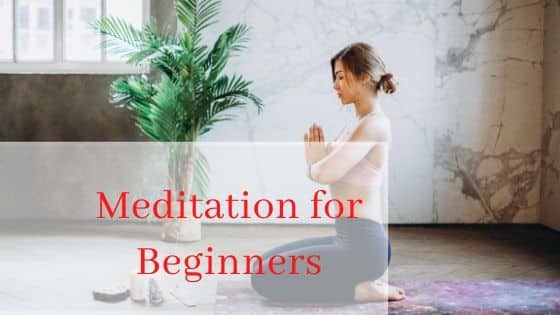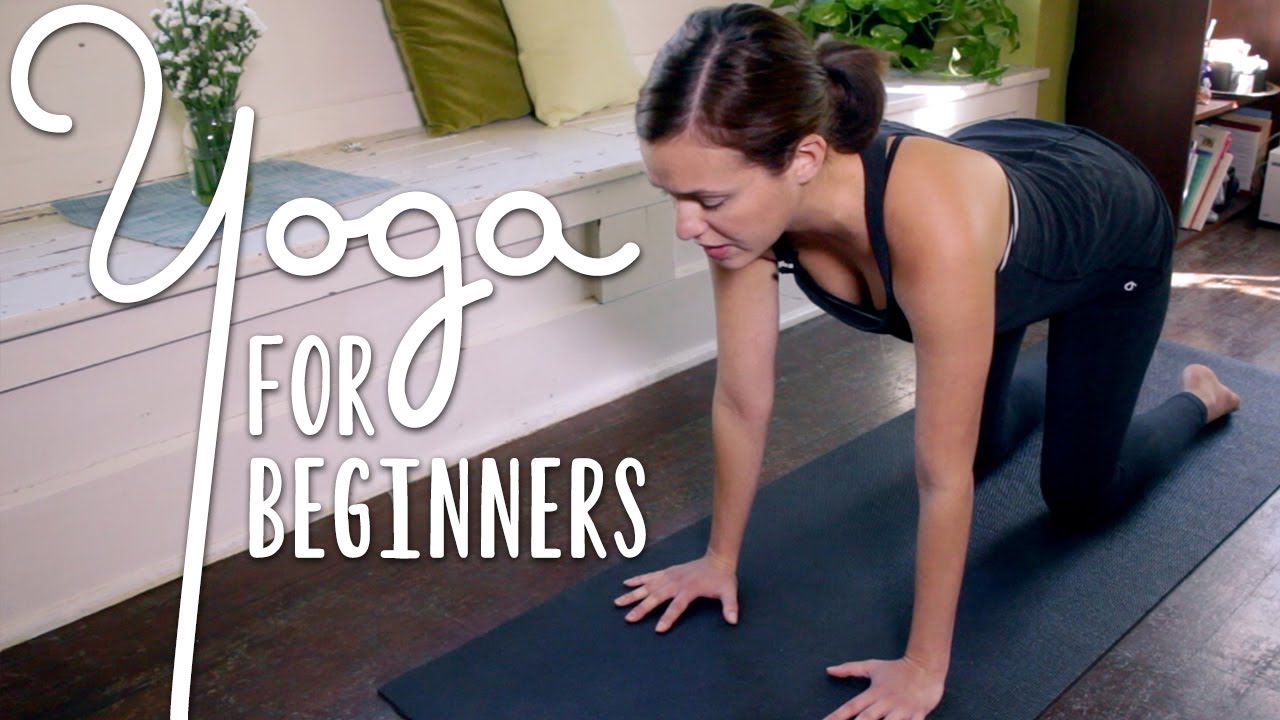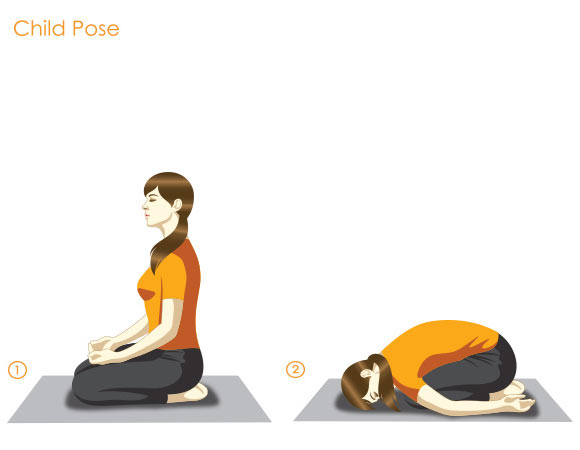
Kids love to practice yoga poses, and this simple and fun activity is perfect for the whole family. You don’t need expensive equipment, or to rent large rooms to enjoy this activity. Here are some of the best poses for kids. This backbend can be used to stretch your spine and thighs. It's also a great way for children to move and breathe. Keep your knees straight and your ankles in line. Place your arms by your side, and place them on your chest.
Try to get your child into the child position. This is the best pose for children who are constantly on the ground, so it's a great choice for young children. This pose resembles a tiny bean and requires a big breath. It is especially great for kids who spend much of their time sitting. While performing this pose, have your child count to five. This will help your child relax and calm down.

A cow pose is great for children. You can make it a little more challenging by placing a folded blanket or pillow under their buttocks. This pose helps to calm the back and strengthen it. You could also try the "boat pose", which is a standing position on your buttocks that creates a "V" shape. You can have this as much fun rocking with your child. This pose is great for you and your child.
This is a great stretch for recovery. Sit cross-legged, and breathe deeply. Now, slowly bend forward and rest you head on your forearms. Although the pose won't last for long, it will help your child connect with their body. This will result in better overall health. This exercise will also improve their coordination. They will appreciate being able to relax. After you've mastered this pose, you can incorporate it into your daily life.
The butterfly pose is another easy pose for kids. The butterfly pose is great for kids as it allows them to stretch their legs and knees. It's a great way of helping your child relax their minds. Although it might seem difficult, the butterfly position is a great way of encouraging your child to stay focused. You can calm your child down by using butterflies. They are also a relaxing and fun stretch. You can do them by standing straight up on the ground.

Moving children is easy with a child’s pose. They should be capable of holding the pose for several seconds at a stretch, and should be able properly to inhale. The child should also feel safe in this pose. By breathing slow and slowly, they should be able keep their balance. They will be more likely stay in the same pose for longer if they are able to balance. The best part is that they can learn the basics and then they can do it on their own.
FAQ
What is the difference in a virus and bacteria?
A virus, a microscopic organism, is incapable of reproducing outside its host cell. A bacterium, a single-celled organism, reproduces by splitting into two. Viruses can be as small as 20 nanometers, while bacteria can grow up to 1 micron.
Viruses spread easily through contact with infected bodily tissues, such as saliva and urine, semen, vaginal secretions or pus. Bacteria is usually spread directly from surfaces or objects contaminated with bacteria.
Viral infections can also be introduced to our bodies by a variety of cuts, scrapes or bites. They can also penetrate the skin through the eyes, nose or mouth.
Bacteria can get into our bodies through cuts, scrapes and burns, insect bites, or other skin breaks. They can also be introduced to our bodies by food, water and soil.
Both bacteria and viruses cause illness. Viruses cannot multiply in their host cells. They can only infect living cells and cause illness.
Bacteria can spread within the host and cause illness. They can spread to other parts of our bodies. We need antibiotics to get rid of them.
Improve immunity with herbs and supplements?
Herbs and natural remedies can be used to boost immune function. Some common examples include garlic, ginger, oregano oil, echinacea, ginkgo biloba, and vitamin C.
However, these herbal remedies should not replace conventional medical treatment. They may cause side effects such as nausea, diarrhea, stomach cramps, headaches, dizziness, and allergic reactions.
What can you do if your immune system is weak?
Human bodies are made up of trillions upon trillions of cells. These cells work together to form organs and tissues that perform specific functions. Another cell takes its place when a cell dies. The chemical signals known as hormones are used to communicate between cells. All bodily processes are controlled by hormones, including metabolism and immunity.
Hormones refer to chemicals produced throughout the body by glands. They travel through the blood stream and act like messengers to control how our bodies function. Some hormones can be produced in the body, while others may be made outside.
Hormone production begins when a hormone-producing gland releases its contents into the bloodstream. Once hormones are released they move through the bloodstream until they reach their intended organ. Some hormones may only remain active for a limited time. Other hormones stay active longer and continue to influence the body's functioning even after they leave the bloodstream.
Some hormones are produced in large quantities. Others are made in small quantities.
Some hormones are only produced at certain times in your life. For example, estrogen can be produced during puberty or pregnancy. Women can get estrogen to build breasts, prevent osteoporosis, and keep their bones healthy. It helps to stimulate hair growth and maintains skin's softness.
Exercise: Good and bad for immunity?
Your immune system is strengthened by exercise. When you exercise, your body produces white blood cells which fight off infections. Your body also removes toxins. Exercise can prevent diseases such as cancer and heart disease. It can also lower stress levels.
However, overtraining can damage your immune system. Your muscles can become sore if you exercise too much. This can cause inflammation as well as swelling. Your body will then produce more antibodies in order to fight infections. This can lead to allergic reactions and other autoimmune disorders.
So, don't overdo it!
These are 5 ways you can live a healthy and happy life.
Healthy lifestyles include eating right, exercise regularly, getting enough rest, managing stress, having fun, and eating healthy. Healthy eating means avoiding sugary and processed foods. Exercise is good for your body and muscles. You can improve your memory and concentration by getting enough sleep. Stress management can reduce anxiety and depression. And finally, having fun keeps us young and vibrant.
How often should you exercise?
It is important to exercise for a healthy lifestyle. But, you don't need to spend a specific amount of time exercising. Find something you like and stay with it.
When you exercise three times per week, aim for 20-30 minutes moderate intensity. Moderate intensity is when you still have to breathe hard after the workout. This type of exercise burns approximately 300 calories.
If you prefer to walk, go for 10 minute walks four days a week. Walking is low-impact and easy on the joints.
Jogging for 15 minutes three days a week is a good option if you prefer to run. Running is a great way of burning calories and building muscle tone.
Start slowly if you aren't used to doing exercise. Begin by only doing 5 minutes of cardio five times per week. Gradually increase your cardio time until you reach the goal.
Statistics
- WHO recommends consuming less than 5% of total energy intake for additional health benefits. (who.int)
- In both adults and children, the intake of free sugars should be reduced to less than 10% of total energy intake. (who.int)
- Extra virgin olive oil may benefit heart health, as people who consume it have a lower risk for dying from heart attacks and strokes according to some evidence (57Trusted Source (healthline.com)
- This article received 11 testimonials and 86% of readers who voted found it helpful, earning it our reader-approved status. (wikihow.com)
External Links
How To
How to live a healthy lifestyle
A healthy lifestyle is one where you are able to maintain your weight, your health and your fitness level. Healthy living means eating right, exercising regularly, getting enough rest, and staying away from harmful substances like alcohol, tobacco, cocaine, and drugs. A healthy lifestyle will help you feel great and stay in shape. In addition, a healthy lifestyle reduces your risk of chronic diseases like heart disease, stroke, diabetes, cancer, osteoporosis, arthritis and many others.
This project had the main objective of providing a step-by–step guide to living a healthier lifestyle. The introduction was the first portion of the project. It describes the benefits of living a healthy life, what it means, and who we are. Next, I wrote the body paragraphs. These include tips and tricks for maintaining a healthy lifestyle. Finally, I wrote the conclusion, which summarizes the whole article and provides some additional resources if needed.
I was able to learn how concisely and clearly I could write my paragraphs through this assignment. I also learned how to organize my thoughts into topic sentences, and the supporting details. Additionally, I learned how to organize my ideas into topic sentences and supporting details. Finally, I learned how to properly use grammar when writing.